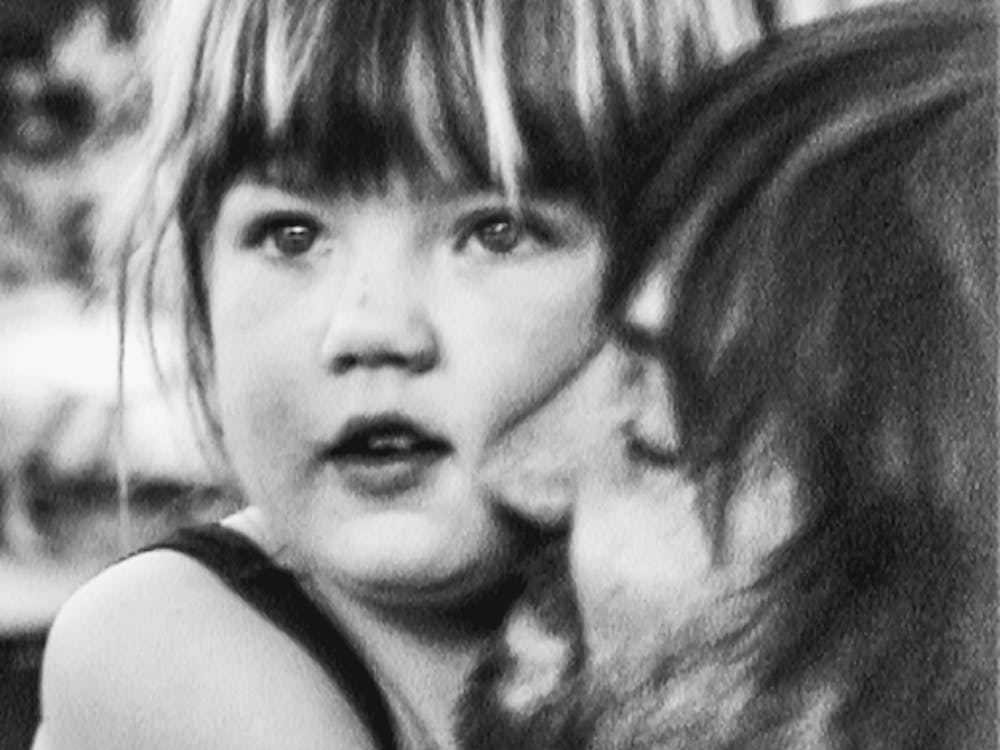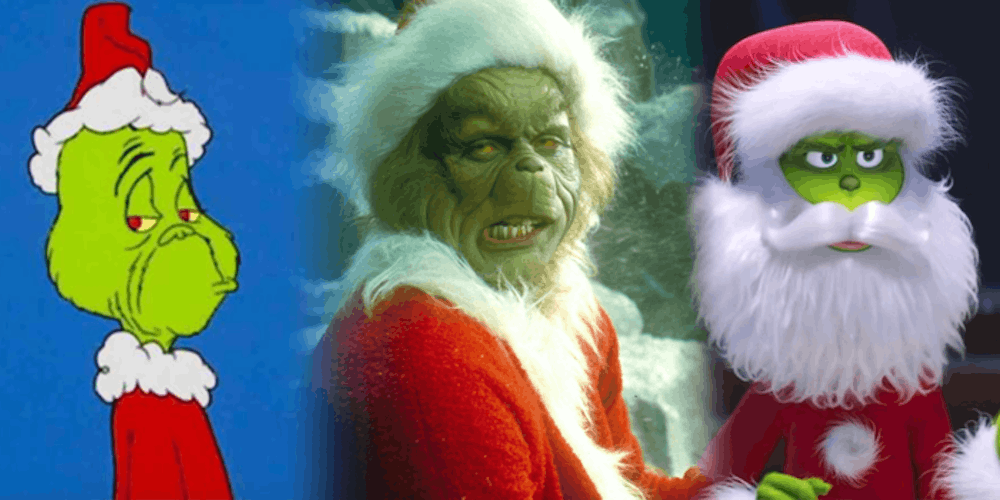The opinions and views expressed in this article are those of the author and do not reflect the opinion of Byte or Byte’s editorial board.
Theodore Seuss Geisel is one of the least recognizable names in all of history. However, his pseudonym “Dr. Seuss” is beloved by children and child-like adults around the world. Known for making whimsical stories that utilize poetic meter, made-up words, and deeper political messages about society and the human condition, Dr. Seuss is famous for inspiring many children to read and enjoy doing so, with many of his books becoming instant beloved classics. Just like all beloved classics, Hollywood was quick to secure the film rights and make a buck or two off of Seuss’s adapted works. The latest instance of this was Illumination Entertainment’s The Grinch, starring Benedict Cumberbatch. However, there have been several others over the past 20 years that have come to fruition. But how do these films measure up to their source material?
The Lorax (2012)
The next most recent film to be adapted from a work of Dr. Seuss was the Illumination Entertainment film The Lorax. This film tells the tale of a greedy old businessman named the Once-ler who destroys the environment by mass-producing his product, called a “Thneed.” During the story, he is visited by a mystical creature named the Lorax, who speaks for the trees. The Lorax tells the Once-ler to stop what he is doing or else the environment will be ruined. The Once-ler doesn’t listen, the environment is destroyed, and the Lorax literally lifts himself up into the clouds, leaving a stone that says “Unless,” indicating that the environment won’t improve “unless” people start actively caring about it. Apparently, people still don’t care enough, as the message is relevant enough today to justify a feature-length film.

Image from Hollywood Reporter
The film version has almost an hour and a half to tell this story, so there are some significant changes and additions made. For starters, the Once-ler is made into a young, handsome idealistic entrepreneur who plays the guitar, which helped swoon over so many young Tumblr girls that there now exists a “Once-ler fandom.” Also, the Lorax is voiced by none other than Danny Devito, who I believe was likely typecast for a short grumpy comedic relief character. There are also funny (and annoying) little animal creatures like fish, birds, and bears that serve as the “Minion-esque” bait that draws little children to the movie and toy store.
However, that isn’t even the main plot of the movie. In the original tale, the Once-ler is telling his story as an environmental lesson to a kid outside his window. That kid becomes the main character Ted in The Lorax voiced by Zac Efron. A manly voice coming out of a 10-year old cartoon is disturbing enough, but Ted’s main goal is to get with Audrey, the girl next door voiced by Taylor Swift, who is at least in her mid-to-late teens. In order to get with the older girl of his dreams, Ted wants to plant a tree, which is how he ends up hearing the Once-ler’s story. There is also another even greedier businessman as the primary antagonist for two reasons: the story wanted the Once-ler to actually be a good guy, and the original book apparently wasn’t anti-corporatist enough for the 21st century. Add in half a dozen ear worm pop songs, and now The Lorax is “hip” and “swaggy” enough for kids to enjoy.
Horton Hears a Who! (2008)
Horton Hears a Who! is about an elephant named Horton who hears a Who. More specifically, the elephant hears a small yelp on a speck of dust, which he catches on a clover. The yelp comes from a Who scientist in Whoville, an entire city of miniature people. Both Horton and the scientist must convince not only the city of Whoville, but also the animals of the jungle, that there exists a city on a speck floating around in a larger world. The movie version, for the most part, is pretty true to the book. There is an evil kangaroo, a trio of monkeys, and a vulture that try to destroy the speck. The flower is eventually lost in a large meadow, and near the end, the animals capture Horton to boil the flower in oil before the Whoville Whos make enough noise to be heard. The movie pads the runtime with lots of extra cartoonish antics, but the substance of the story is really close to the book.

Image from Alamo Drafthouse Cinema
There are a few major changes, however. The scientist is changed into the Mayor of Whoville, voiced by Steve Carell, who has much more of the plot focus than the original book. Not only does he have a conflict with the city council in convincing the town they live on a speck, but he also has 96 daughters and an emo son named Jojo, who becomes pivotal to the climax. Horton, voiced by Jim Carrey, is a “school” teacher to the kids of the jungle, whose zany antics and Jim Carrey-ness causes concern among many of the parents and leads to distrust. There is also a mouse named Morton voiced by Seth Rogen, who acts as Horton’s best friend and voice of reason. I’m not sure why the voice of reason was chosen to be portrayed by Seth Rogen, but hey, it’s a kids’ movie. Overall, the movie stays true to the original story and somehow manages to have even fewer musical numbers than the original 1970s cartoon.
The Cat in the Hat (2003)
The second (and last) live-action film adaptation of a Dr. Seuss story was The Cat in the Hat, starring Mike “Get out of my swamp” Meyers. The Cat in the Hat book doesn’t appear to have a deeper moral behind it; instead, the simplistic story follows a cat in a hat who helps two children have fun (and nearly destroy their house) during a rainy day. Dr. Seuss was apparently challenged to write a bookthat could help young kids learn to read that they wouldn’t hate, as opposed to the Dick and Janeshort readers being used at the time. The movie was a critical disappointment, with many critics attacking the multiple liberties taken with the story in order to fill a feature-length film. Many parents also criticized the adult humor and multiple innuendos, arguing that the film should have been rated PG-13. It is likely because of all these reasons that Dr. Seuss’s widow, Audrey Stone Geisel, has forbidden any more live-action adaptations. But at least we got some decent memes from this atrocious film.

Image from Imgur
How the Grinch Stole Christmas (2000)
The first and most well-known film adaptation of Dr. Seuss’s works was How the Grinch Stole Christmas, starring Jim Carrey (two-for-two in Seuss starring roles) as the titular green grump who decries the fallacy of holiday consumerism. I’m sure the irony wasn’t lost on Dr. Seuss regarding the use of the Christmas season for material gain, since his original book sold over 3 million copiesbetween 1957 and 2000. The premise of the book is as follows: The Whos in Whoville like Christmas, but the Grinch hates it, so he dresses as Santa Claus and steals all material possessions, then experiences a cardiomegaly and returns all the material possessions to Whoville after learning that Christmas is about more than just material possessions.
The film adds a lot more to the story (noticing a pattern here?) in order to, once again, pad the runtime. Cindy Lou Who has her own subplot discovering the true meaning of Christmas and inviting the Grinch to Whoville’s celebration. The townspeople of Whoville are also focused on consumer culture, between Christmas Light competitions, maxing out credit cards on gifts, and having a “Nog Off,” which makes the final message of Christmas being about celebrating and sharing with close friends and family much more prominent. There is also the tragic backstory to explain why the Grinch hates Christmas: He was bullied for being green and hairy in front of a girl he likes, with whom he ends up with at the end of the movie. No, really, that’s it. While I personally enjoy this movie come Christmas time (it is certainly very quotable), the film does make many changes to the original heart-warming story and is seen by many as a corrupt version of Dr. Seuss’s classic tale. But at least they didn’t change the “Mr. Grinch” song to a hip rap version.

Image from Bustle
These different film versions of Dr. Seuss’s work have their fair share of uber-fans and critics alike. Many are joyed to see these classic stories reimagined for the silver screen, but others condemn the multiple changes and additions made to increase runtimes and sell tickets to a mass audience. While the typical Dr. Seuss messages are still present, the impact and importance may be missed due to everything else these movies throw at the audience. So, will the latest film adaptation, The Grinch, surpass expectations of previous critics? Or will it fall short of capturing the magic that makes Dr. Seuss’s stories so timeless? One thing is for sure: Tumblr now has a new shipping idol to fawn over.
Sources: Mental Floss, Once-ler Fandom Wiki, NPR, TV Overmind, Publishers Weekly, Mayo Clinic, Polygon
Images: Hollywood Reporter, Alamo Drafthouse Cinema, Imgur, Bustle
Featured Image: Tt Shinkan
For more entertainment, tech, and pop culture related content, visit us at Byte BSU!



















